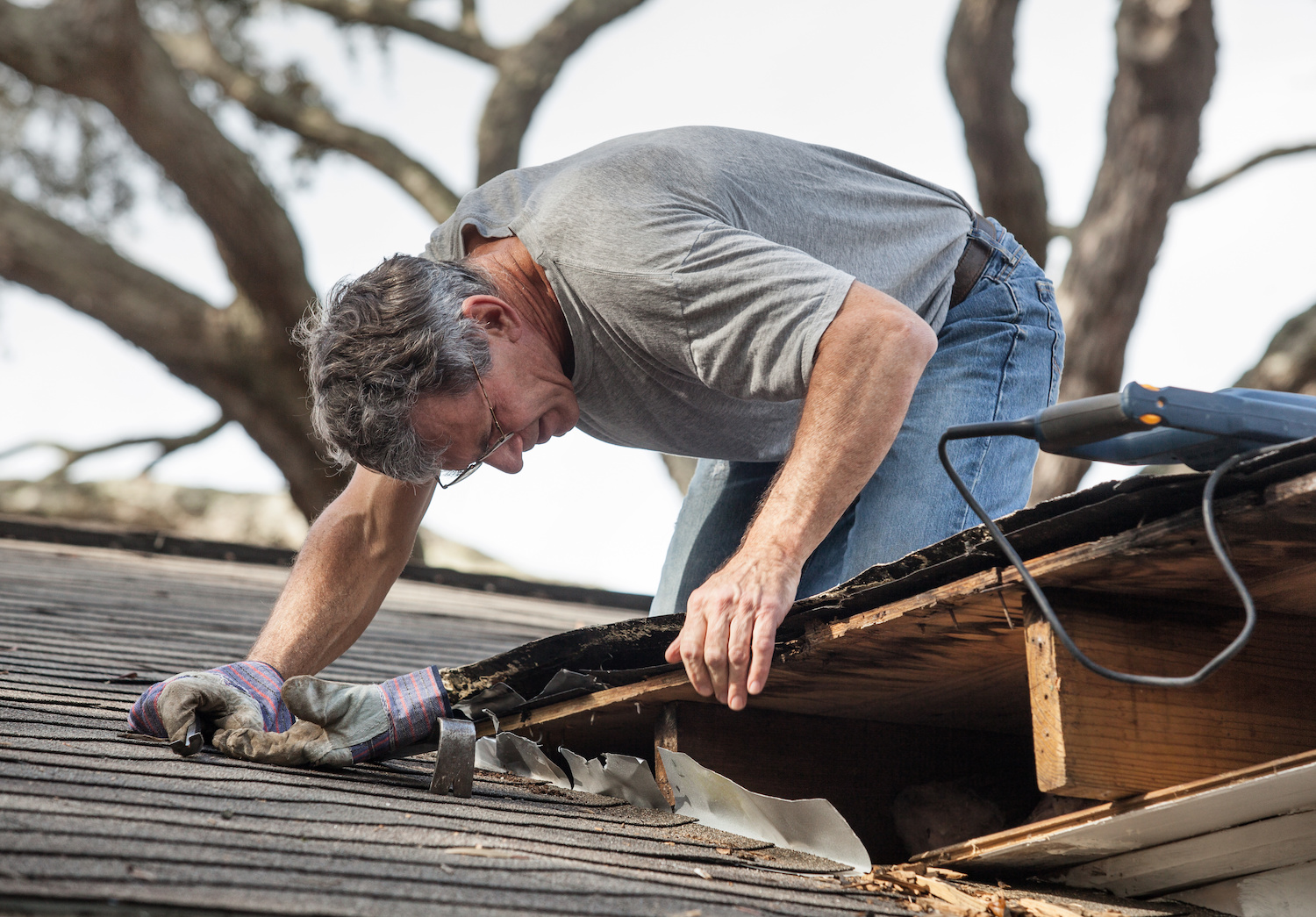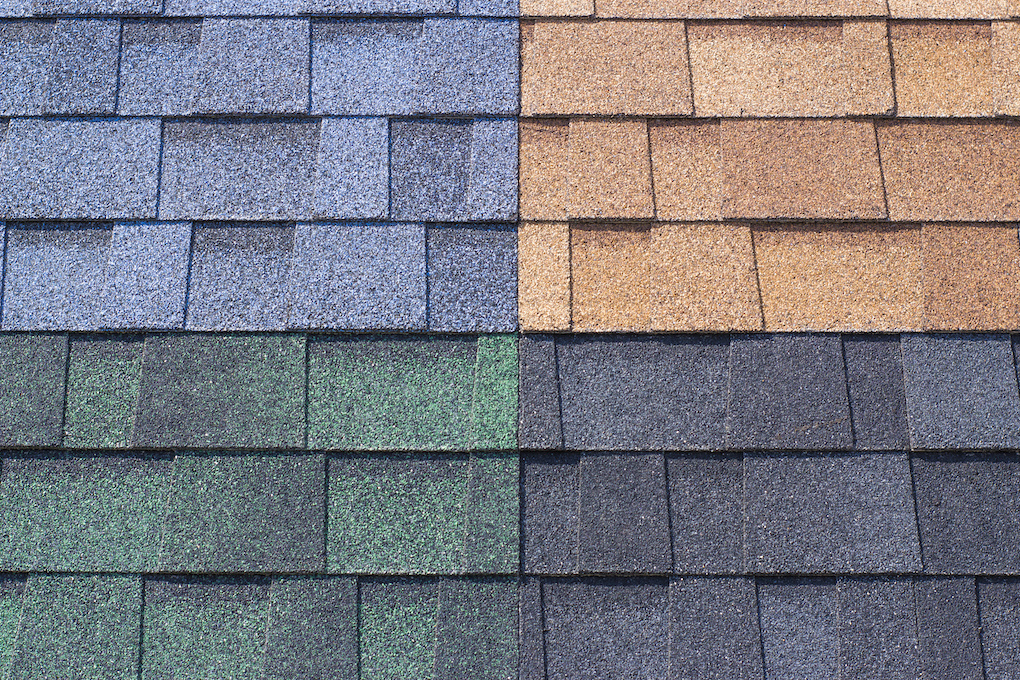
Picking from the different types of roof shingles is kind of like this. Imagine being a kid again and walking into a big candy store. There are SO many different options, from the most expensive and beautifully giant lollipop you’ve ever seen to the standard gummy bears that you love. You have to figure out the best way to spend the $10 your parents gave you, and although you’re excited, you’re also a little overwhelmed. So do you bust out the piggy bank savings and get extravagant? Or do you go stick with the tried and true candy that everyone loves?
Picking out new shingles or a new roofing system for your home is just as exciting, at least we like to think so. However, we also understand that the process of picking out new shingles can be equally as overwhelming. The options are almost endless, but the cost can be a little bit hard to swallow. There’s a lot of information, and if you’re not careful, it’ll all go over your head in an instant.
When it comes right down to it, the material your roof is made out of defines its durability, I.E. how well it’ll stand the test of time. Not all roofing materials are created equal, and while they’re all somewhat similar in the sense that they’ll keep your house protected from the elements, some will provide a better experience than others.
We’ve put together this 2021 homeowners guide to help you navigate the giant candy shop of types of roof shingles! We’ll go over the most common types of shingles for homeowners, break down their characteristics, and some pros and cons.
Asphalt Shingles
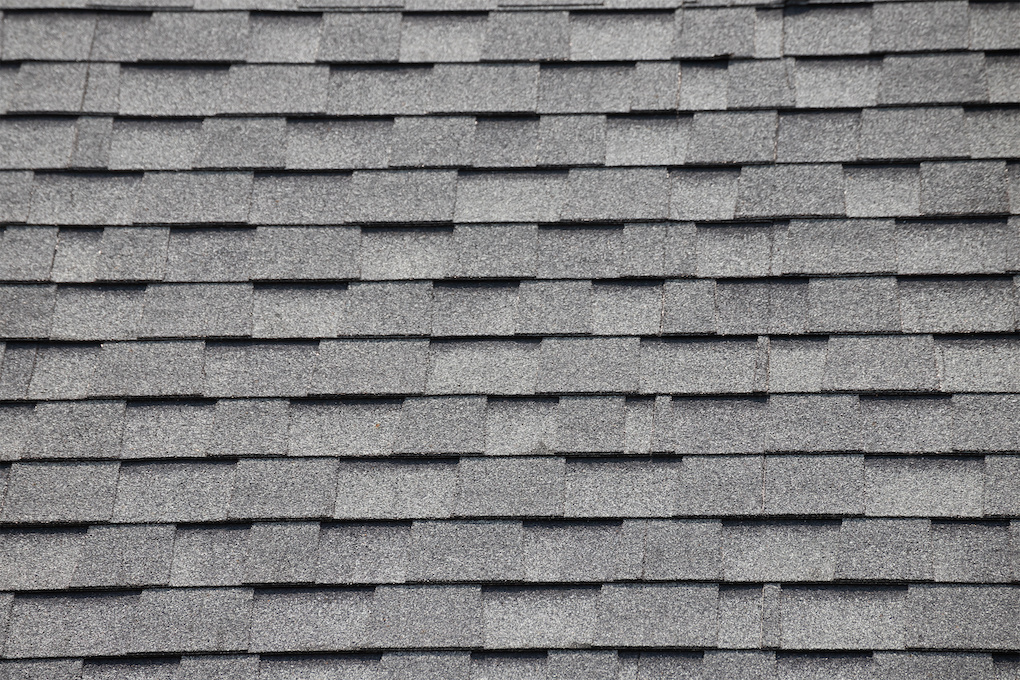
By far the most common and affordable, asphalt shingles are the gummy bears of the residential roofing world. Asphalt shingles are lightweight, which means fast installation for contractors and easier transport for delivery trucks. As of now, asphalt shingles are still one of the cheapest materials out there for rooftop protection, which is great news for homeowners on a budget!
Because of their lightweight, asphalt shingles are susceptible to wind, hail, and other weather damage. On the plus side, the asphalt material is flame resistant. There are three main types of asphalt shingles that are commonly used on homes around the U.S.These types include 3-tab asphalt shingles, Architectural Asphalt shingles, and Designer or Luxury Asphalt shingles.
3-tab Asphalt Shingles
3-tab shingles are the most common in residential settings. They’re affordable, easy to install, and they come in a wide variety of colors and styles. 3-tab shingles make for simple repairs and replacements, some of which are even DIY friendly.
Architectural Asphalt Shingles
Getting a little bit fancier, Architectural shingles have an embossed texture that’s supposed to mimic the look of slate. The raking pattern is wider than 3-tabs, so they’re not as common but are still very popular among homeowners.
Luxury Asphalt Shingles
Luxury, or designer, asphalt shingles are somewhat self-explanatory. They are like regular asphalt shingles, but they are more durable, heavy, and beautiful than standard asphalt shingles. Unfortunately, in addition to the good looks and higher durability, they also cost quite a bit more.
Asphalt shingles can last anywhere from 10-50 years, depending on the quality of the shingle, how well it’s maintained, and the weather conditions. Overall, if you’re looking for a simple and reliable roofing system that’s not too flashy, asphalt shingles are a good choice.
Wood Shingles
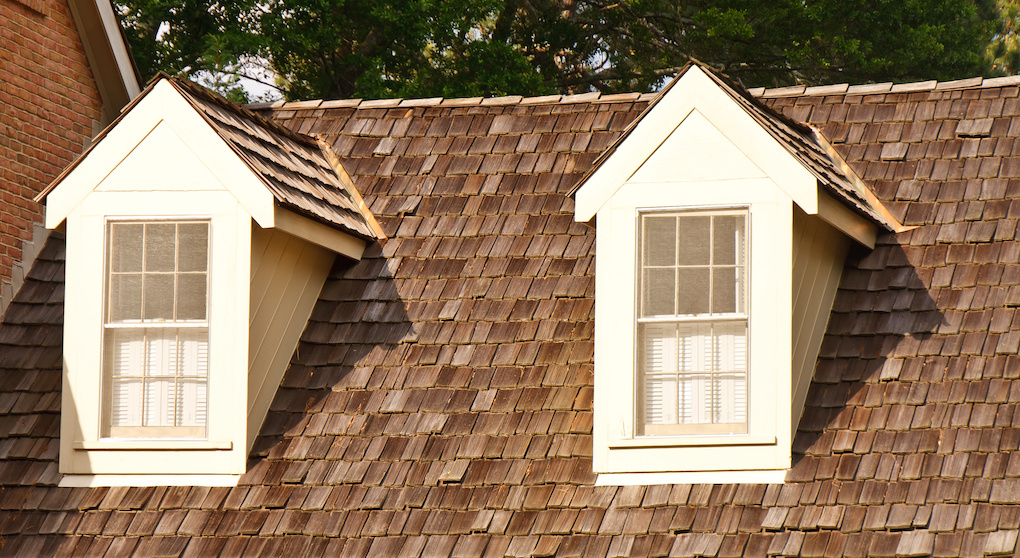
Wood shingles are a natural wood roofing option that come in a variety of colors, sizes, and prices. The popularity of these natural shingles is declining due to concerns over their durability in harsh conditions. In perfect conditions though, you can expect them to last around 30 years. One thing to note about wood shingles is that they cost more than asphalt shingles and usually require significantly more maintenance.
Wood shingles require more maintenance because they chip and break easier than asphalt shingles. They also lose their color over time and will need to be stained every few years to keep them from rotting. As the owner of a wood shingle roof, you can expect it to fade even within the first year, re-staining a wooden roof is a common practice. Despite those drawbacks, wood shingles will give your home a stunning and unique look that is sure to boost curb appeal!
The two most common types of wood shingles are:
Cedar Shingles
Wood shingles can be made from numerous different types of wood but the most common is Cedar. Cedar is an inexpensive option among wood shingles and has a beautiful color.
Wood Shakes
Like wood shingles, wood shakes are commonly made of cedar but come in other wood types like pine, redwood, cypress, and more. The primary difference between wood shakes and shingles is the way they are cut. Wood shingles will be uniform and machine cut, while wood shakes will have a more rustic and uneven look, making for a beautiful roof. Generally, you’ll pay a bit more for wood shakes because of the time it takes to install them.
Metal Shingles
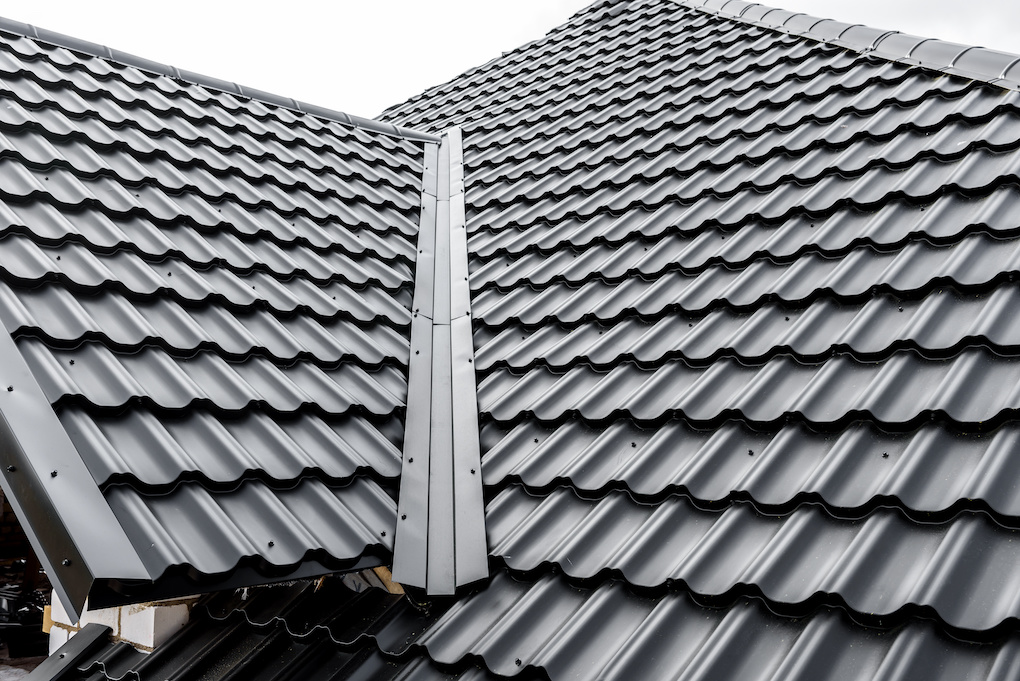
Metal shingles are a great, long-lasting alternative to asphalt or wood. You’ll find more metal roofs on commercial buildings than residential homes, but as they grow in popularity, you can expect them to become more common for homeowners too.
As with most types of roofing, there’s no single way to classify metal roofs because different contractors use different types of metal roofing materials. Generally, the most common metals for roofing are steel and copper but you can also find aluminum, zinc, tin, stainless steel, galvanized steel, or even more exotic metals like titanium or silver.
Metal roofs have a long lifespan averaging around 60 years, although they can last even longer depending on the material. This is a great choice for homeowners that want to invest in something that will last them a while and also lower their energy bill at the same time. Another added benefit is that metal roofs reflect heat which means less energy is required to cool your home as they prevent excessive heat from getting into your house. Metal roofs are one of the more expensive options, but many homeowners find the investment well worth it in the long run.
Clay Tile Shingles
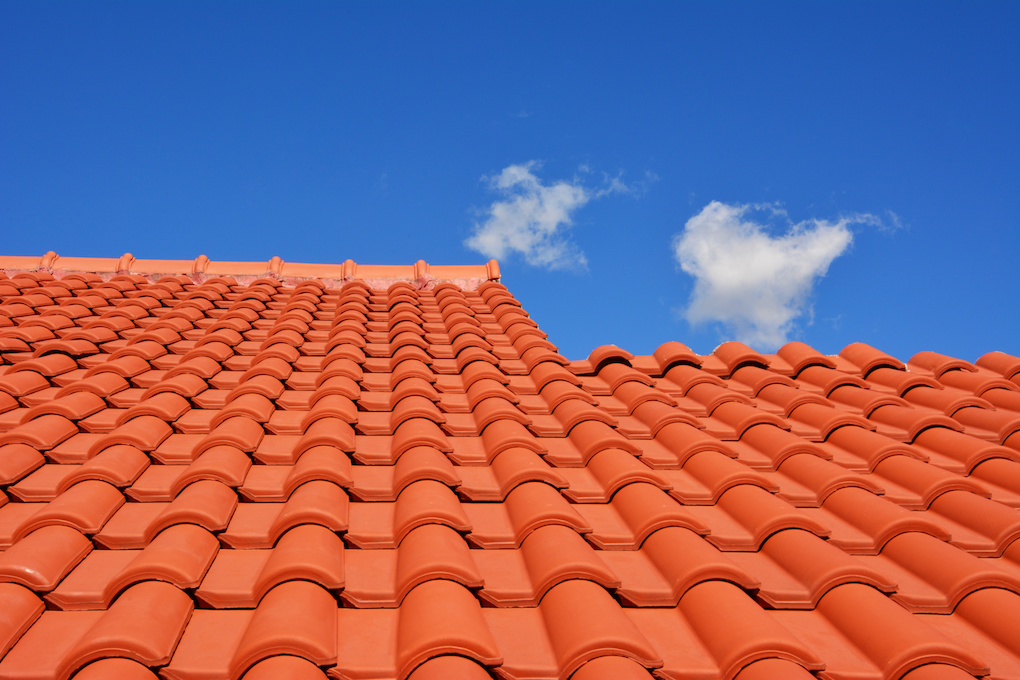
Clay tile roofs have been used for centuries in many parts of the world, especially prevalent in Latin America. Clay shingles are gaining some popularity in residential neighborhoods but are mostly seen in warmer southern states like Texas, Arizona, and Florida.
Clay tiles offer a unique look, and they have one of the longest lifespans out of any roofing material. The downside of clay tile shingles is that they are extremely heavy, so although a wind storm will rarely blow them away, the cost of installation and materials might blow you away. And while they are extremely durable, repairs and maintenance can be especially tricky because of the level of difficulty.
Additionally, some homes may not even have the frame or structural integrity to support the weight of a clay shingle roof. While being completely flame-resistant, long-lasting, and absolutely stunning, clay tiles are an expensive and high-maintenance option for the average homeowner.
With so many different options within asphalt shingles alone, making the final decision can be difficult. At Eagle Eye, we want to be the professional resource you can trust. If you have questions about your roofing system or shingles, reach out to us today!

